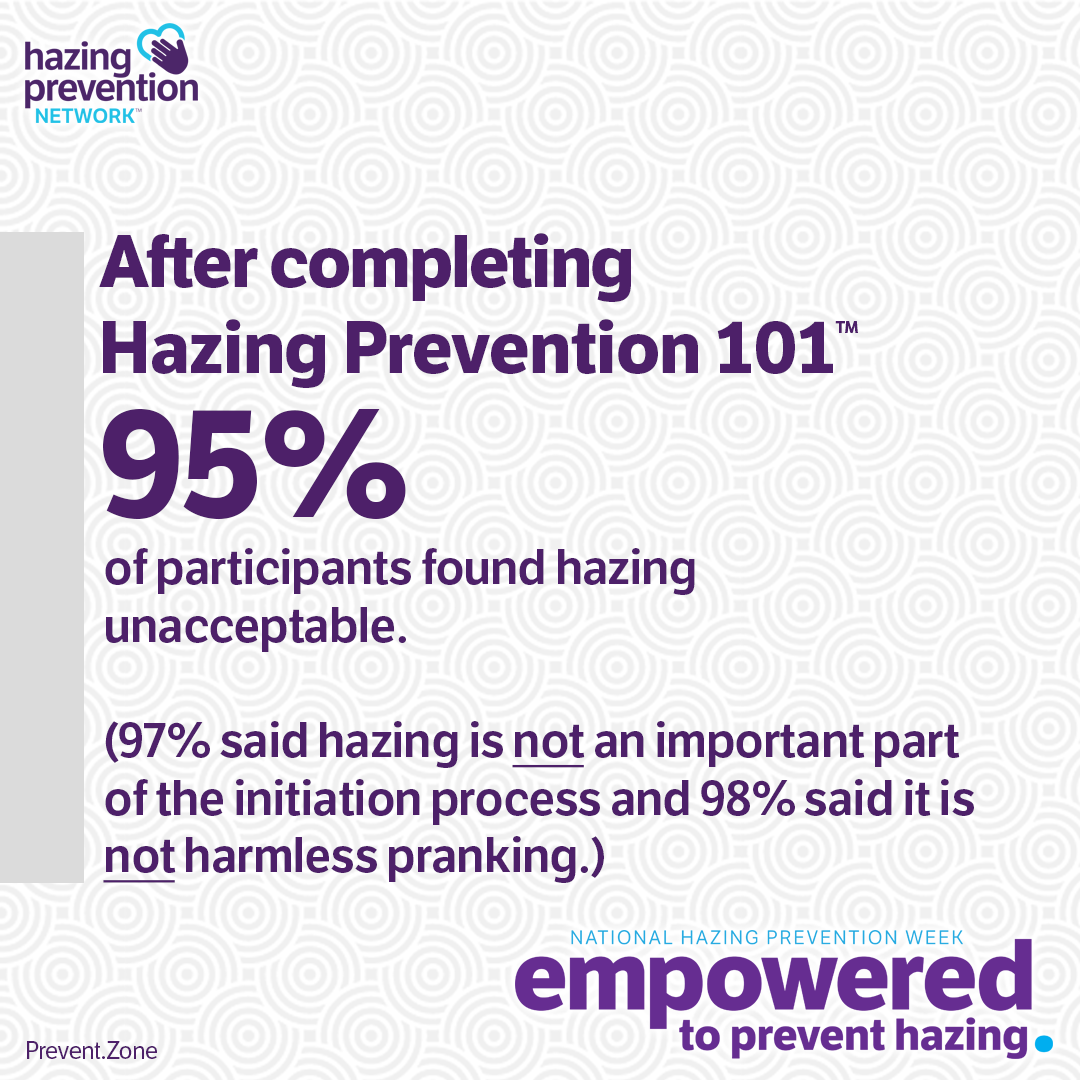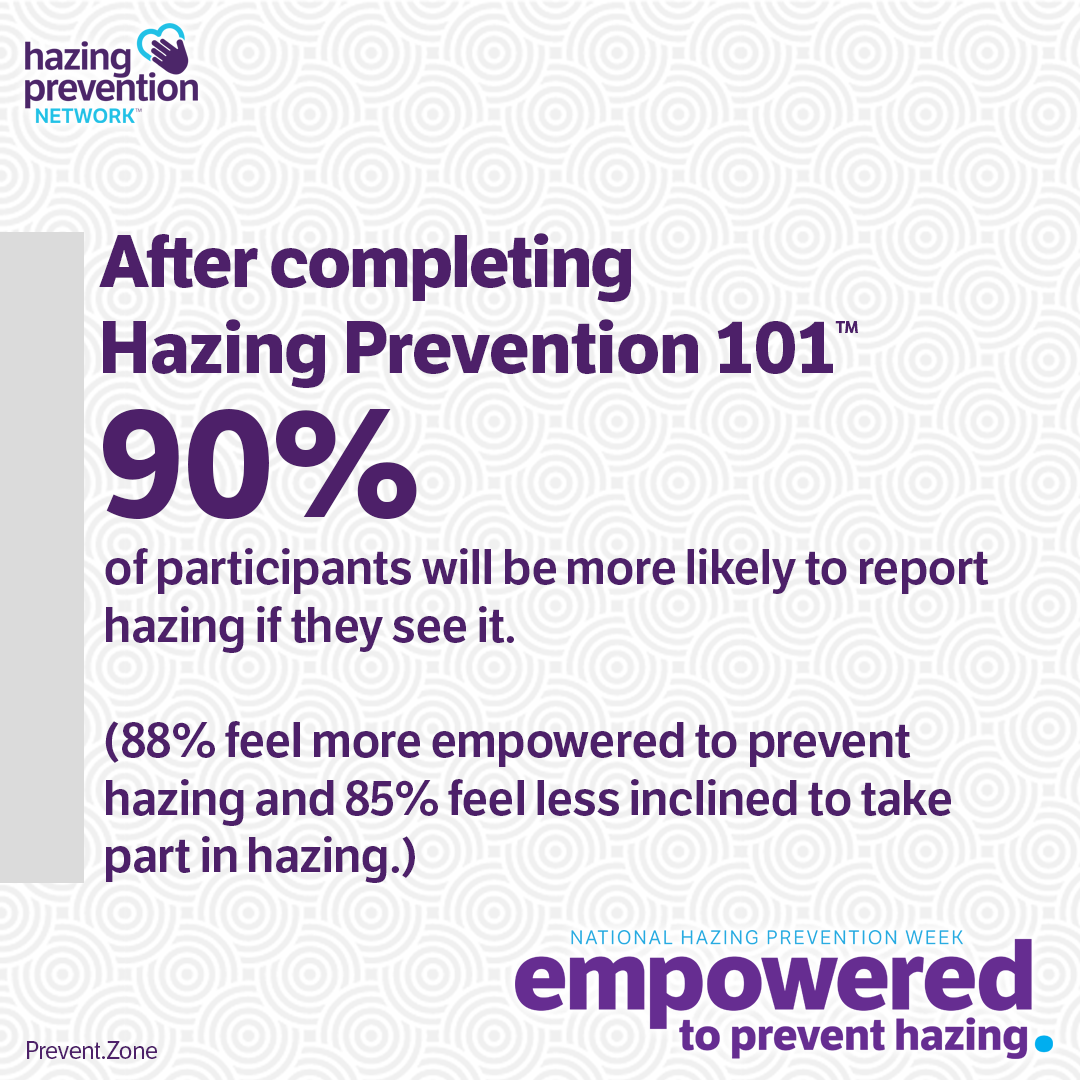Hazing Facts
DEFINITION
While varying definitions are often a part of laws and codes of conduct, hazing is a power dynamic behavior aimed at screening, fostering bonds, or establishing standing in organizations that risks the health and safety of individuals, causing deliberate or unforeseen physical and/or emotional harm counter to organization purposes. Citation: Piazza Center. (2024).
QUICK STATS
THE MORE YOU KNOW
Who has experienced hazing
- According to a 2017 research study conducted by YouGov, a public opinion research company, as many as 22 percent of Americans indicate that they have been hazed.
- Younger adults (ages 18-34) indicate experiencing more hazing and older adults (ages 55+) less. 1
Among college students, research conducted in 2008 by Elizabeth Allan and Mary Madden at the University of Maine indicates a much higher incidence of hazing. 2 They report:
- 47% of students come to college having experienced hazing.
- 55% of college students involved in clubs, teams, and organizations experience hazing.
In 2000, Nadine Hoover and Norman Pollard (a former board member of Hazing Prevention Network) published research into hazing at the high school level. 3 They found:
- 98% of all high school students belonged to at least one group.
- 48% of students who belonged to groups experienced hazing.
- 43% reported being humiliated and 30% took part in potentially illegal activity.
A 1999 study by Hoover specific to NCAA athletes 4 found that:
- More than 250,000 athletes experienced some form of hazing to join a college athletic team with 20% of those subjected to dangerous and potentially illegal activity.
Hazing is commonly associated with fraternities, sororities and athletic teams. A quick internet search will reveal that hazing occurs in almost every kind of group from athletes to cheerleading, band, performing arts, etc. Hoover and Pollard point out that:
- Male and female students reported high levels of hazing. 3
- Students with lower grade point averages are at higher risk of being hazed. 3
- High school students in nearly every kind of group experienced hazing, including 24% of students in church groups. 3
- College students report similar experiences with hazing occurring even among honor society member and members of academic clubs. 2
What kind of behavior is involved?
- Alcohol consumption, humiliation, isolation, sleep-deprivation, and sex acts are hazing practices common across all types of student groups. 2
- In more than half of the hazing incidents, a member of the offending group posts pictures on a public web space.
- High school students are just as likely to engage in dangerous hazing practices as college students (22% and 21% respectively). 3
- Women athletes were more likely to be involved in alcohol-related hazing. 4
- Football players were most at risk for dangerous/illegal hazing. 4
What are the effects of hazing?
For high school students, the research shows that 71% experienced at least one negative consequence 3:
- 24% got into a fight.
- 23% were injured.
- 22% fought with parents.
- 21% did poorly on school work.
Other reported consequences included depression and other psychological consequences. 3
But doesn’t hazing enhance group unity or cohesion?
Bonding is a common excuse for hazing, and it is true that group experiences can enhance the sense of belonging or bonding. Unfortunately, this isn’t true in the case of hazing.
Madden and Allan reported more positive than negative associations with hazing among college students. “During interviews, numerous students justified hazing practices based on their perception that it promotes bond or group unity. However, the survey results indicate that the majority (two-thirds) of respondents do not cite this as an outcome of their hazing experiences. Similarly, hazing is often rationalized by saying it promotes “a sense of accomplishment.” However, the data reveal that more the three-fourths of the respondents do not identify “sense of accomplishment” as an outcome of their hazing experiences.” 2
References
1. 1 in 5 Americans experienced hazing during high school
2. Hazing In View: College Students at Risk
3. Alfred Hazing Study with Tables
4. National Survey: Initiation Rites and Athletics for NCAA Sports Teams






